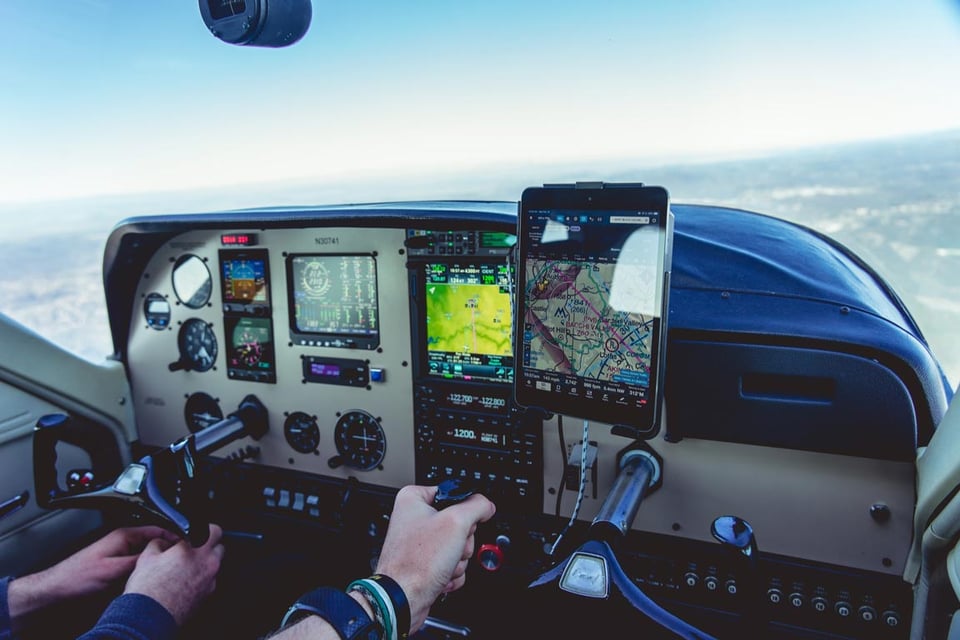
When you join the National Association of Flight Instructors (NAFI), you pledge to “provide a safe and effective learning situation for [your] students.” Improving safety and efficacy in aviation education is a lifelong task for any certified flight instructor (CFI), NAFI-member or not, but continuous improvement is not always easy. Flight instructor tools of all kinds—books, objects, software—may provide just the boost you need. Here are six tried-and-true resources that can help you guide your students to their first solo flights as safely, effectively, and enjoyably as possible.
6 Flight Instructor Tools You Can’t Do Without
- The 2020 Aviation Instructor’s Handbook. If you’re already teaching student pilots, odds are you’re familiar with the Federal Aviation Administration’s (FAA) publication FAA-H-8083, better known as the Aviation Instructor’s Handbook. But have you checked out the newest edition? It replaces the previous version from 2008, and it’s packed full of practical tips and protocols—not just on flight instruction technique, but also on the sticky subjects of human behavior and the science of learning. It’s the first place to look when you encounter a teaching challenge, from motivating students to streamlining lesson plans. And it won’t cost you a penny. Access the Aviation Instructor’s Handbook for free here.
- Multimedia pilot manuals. Flight schools may follow different curricula—a Part 61 training program is very different from a strict Part 141 teaching path—but they all need textbooks with matching syllabi. Choose course materials that are available in both print and online editions, preferably with supplemental video content. For example, ASA offers print and digital editions along with a helpful library of video downloads. Multimedia availability gives students several ways to experience the content, serving learners of all types. If a lesson isn’t sticking when student pilots read it in the hardcover text, they can try the chapter again on a screen, then back up their learning with videos. Repetition across media is a surprisingly effective teaching tool.
- A dry erase board. Seriously! No student in the history of aviation ever had too much ground instruction. And no ground school classroom is complete without a dry erase board—though even a chalkboard will do the trick. A rough sketch of an instrument panel does more to prepare students for their time in the cockpit than all the verbal instructions in the world. A white board may not be as exciting as some flight instructor tools, but it’s the best option for illustrating instruments on the fly during ground instruction.
- FAA-approved flight simulators. Part 61 of the FAA regulations allows the use of flight simulators for training, evaluation, and even flight experience in pursuit of pilot certification—but only if those systems are approved by the FAA. Flight simulation training devices, as the FAA calls them, are a significant investment compared to other flight instructor supplies, so it’s vital to choose one the FAA has already verified. Check out some of the great simulators manufactured by Redbird Flight Simulations—they’re built for flight training and have an incredible track record with support.
- Continuing education programs. The NAFI Code of Ethics tells you to “continually improve [your] own teaching and flying skills through education and operational experiences.” Luckily, those educational experiences are easy to find. Sign up for the FAA WINGS program, which provides online classes, seminars, and flight experiences. Join the SAFE Aviation Educator Mentoring Program, which pairs experienced CFIs with even more experienced ones. If you’re a NAFI member, resources include the NAFI Professional Development Program (PDP) and a Professional Development Center.
- Flight training software. Scheduling training flights, managing student records, and documenting lessons for the billing department all distract from the core task of safe flight education. To lighten the administrative load on instructors, flight school needs management software that streamlines communication, scheduling, and reporting. Flight Schedule Pro’s training hub goes one step further, providing a student progress dashboard that allows you to see how all your trainees are doing at a glance, so you can intervene before anyone falls behind. You can also check training activities on a daily and weekly basis, reducing your planning burden to leave more time for actual instruction. And because Flight Schedule Pro integrates scheduling, training, maintenance, and reporting features into a single platform, you can instantly book an aircraft, log a flight, or check on a student’s eligibility for the next training task.
Try Flight Schedule Pro’s Training Tools For Free
A flight instructor has one job: To take students safely from zero to pilot. Anything outside of that mission is a distraction. Flight Schedule Pro’s flight instructor tools make record-keeping and class organization as quick and intuitive as possible—so you can spend less time on administrative tasks and more imparting life-saving knowledge. Try Flight Schedule Pro yourself with a free trial, or schedule a demo to learn more.

